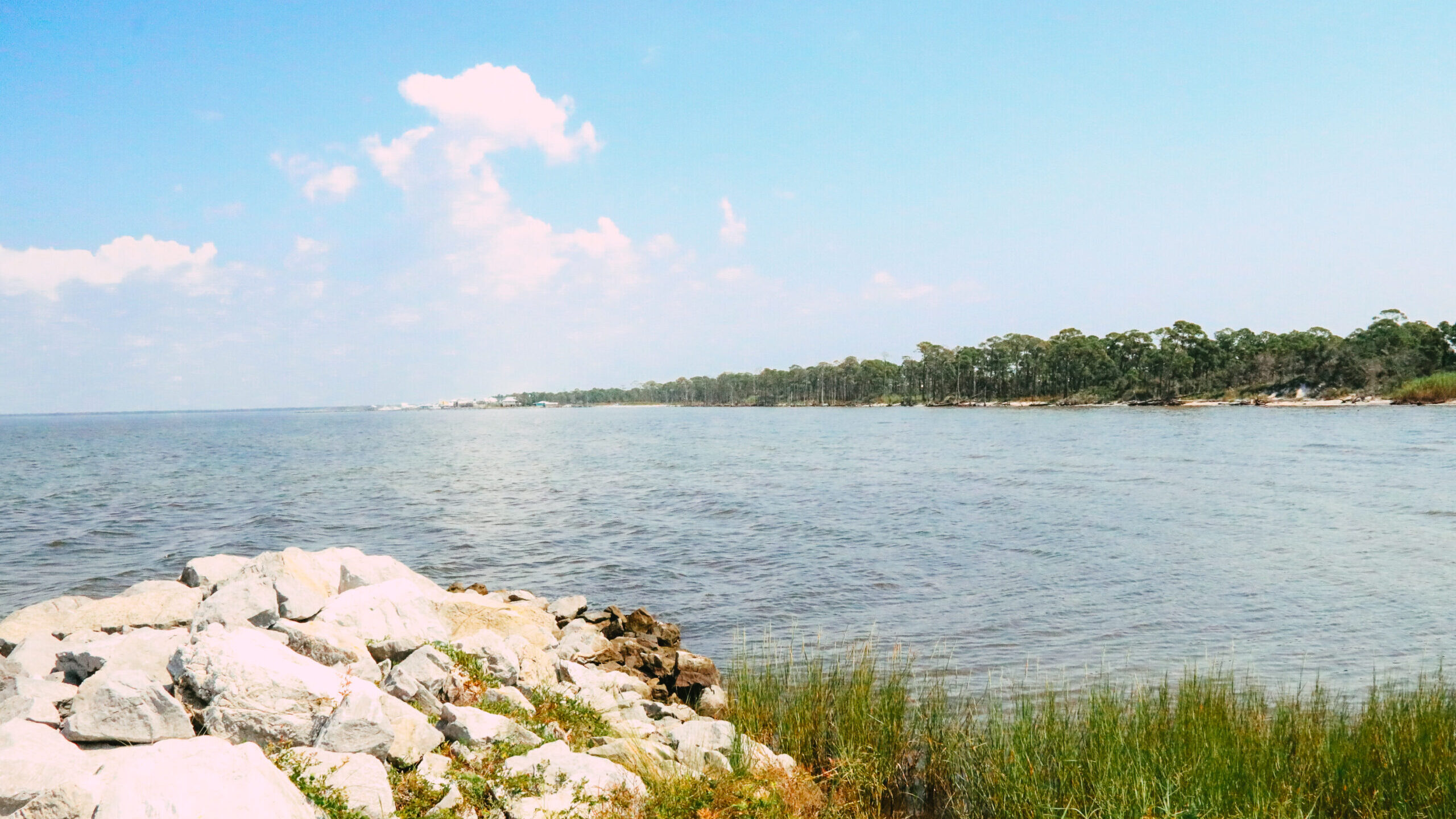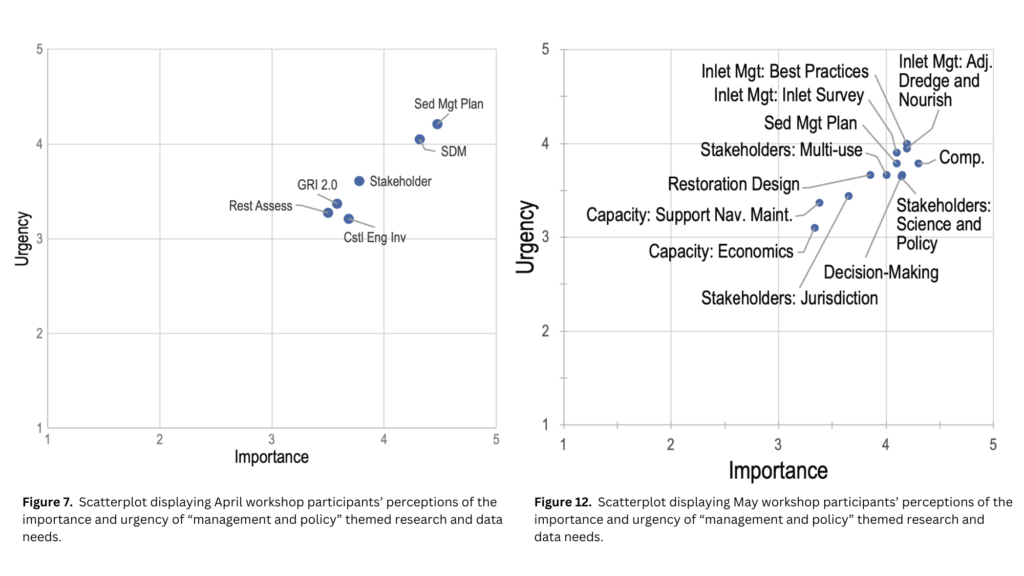Workshops Explore Sediment Budget Modeling to Enhance Natural and Cultural Resources at Gulf Islands National Seashore

SE CASC project report Gulf Islands National Seashore Regional Sediment Budget Research and Data Needs: Workshop Series Summary, was recently published. SE CASC Principal Investigators Erin Seekamp (NCSU) and James Flocks (USGS) co-authored the report, along with 2021-22 Global Change Fellow Courtney Hotchkiss (NCSU) and Linda York and Kelly Irick from National Park Service.
The report is a product of the SE CASC project Enhancing Coastal Adaptation Planning at Gulf Islands National Seashore.
Gulf Islands National Seashore (GINS), located in the northern Gulf of Mexico, is comprised of 10 barrier islands extending over 250 kilometers from Florida to Mississippi. Barrier islands offer many services to both the public and wildlife, including protection from storms, habitat for endangered species, recreational opportunities, historical significance, and economic output from tourism. Along GINS, sandy beaches, seagrass beds, and forests are in abundance providing critical habitat for wildlife. The submerged environment consists of a dynamic coast bisected by inlets, shoreline indentations, with large tidal deltas, fan-shaped deposits of sand/sediment.
However, the services provided by these barrier islands are under threat due to storms, sea-level rise, and human interference reducing sediment supply. This region has seen a 24-64% loss in land area over the last century. The following processes have been observed across the Mississippi barrier islands: 1) higher net erosion rates due to diminished sand transfer, 2) narrowing of the island as a result of erosion on both the Gulf and Sound sides, and 3) segmentation of islands caused by storms. The complexity of barrier islands can be attributed to the anthropogenic and natural factors that affect the islands’ sediment budget, or supply. The island’s sediment supply affects its response to changing environmental conditions caused by natural factors, such as grain size, which can impact the rate of sediment transport, and human actions, such as road maintenance.
This study sought to advance sediment budget modeling efforts by conducting a “Needs Assessment Workshop” at Gulf Islands National Seashore. The workshop was organized by North Carolina State University in collaboration with the National Park Service (NPS) and the U.S. Geological Survey (USGS) and was facilitated by National Oceanographic and Atmospheric Administration staff. The purpose of the workshop was to identify and prioritize specific research and data needs regarding the sediment budget at GINS that can enhance the National Park Service efforts to conserve the islands’ natural resources, cultural resources, and the facilities and infrastructure that support both conservation and visitor use of those resources. Two research questions were addressed during this two-part, two-day virtual workshop series: 1) “What research and data needs exist for the sediment budget at Gulf Islands National Seashore?” and 2) “How can research to address these needs capitalize on regional partnerships to advance natural and cultural resource conservation at Gulf Islands National Seashore?”
The workshops consisted of two target audiences: 1) NPS and USGS (April workshop) and 2) regional Federal, State, county, and nongovernmental organization staff (May workshop). Each audience met separately and for two sessions each. The April workshop identified research and data needs along with priorities associated with sediment transport and budgets at GINS. The May workshop explored regional research and data needs in addition to the priorities of external partners related to the priorities identified at the previous workshop. It also included presentations on the existing knowledge and research needs along with feedback from stakeholders addressing primary concerns.
The objectives of the workshop series were to share information about sediment transport and management and to assess the importance and urgency of identified research and data needs via polls. These research and data needs fell under the following themes: cultural resources, natural resources, geomorphology and sediment, mapping and modeling, policy and management. Poll results were visualized via scatter plots and shared with participants to encourage conversation and determine the most necessary (important) and time-sensitive (urgent) needs within each theme. See figures below from the report. The most important and urgent research and data needs identified include: mapping, regional sediment budget and management plan, and dynamic modeling of sediment processes.

Under the cultural resources theme, participants found Section 106 surveys to be of “highest importance and urgency.” Section 106 of the National Historic Preservation Act (NHPA) requires terrestrial or maritime surveys within the area of potential effect prior to management action. Although there was no research need identified as “most important” for the natural resource theme, participants did express an urgent need to gather information on habitat usage. Across the geomorphology and sediment theme, developing a sediment transport budget and predictive sediment transport modeling efforts were determined to be “most urgent and important.” In terms of mapping and modeling, updated elevation maps and maps of seafloor morphology were deemed of “highest importance and urgency.” Finally, high priorities for the policy and management theme included effective management plans for sediment dredging and inlet maintenance.
Findings revealed the need to develop a long-term, comprehensive sediment plan to connect sediment management with cultural and natural resource priorities and recreational opportunities. Communication with the broader research community was deemed important for solidifying potential funding opportunities and organizing research activities. It was also determined that research and policy should be integrated through a structured decision-making process.
The Gulf Islands National Seashore Regional Sediment Budget Research and Data Needs Workshop Series proved very successful in achieving the intended goals. Through needs-assessment workshops such as these, teams can identify existing research, prioritize data needs, and discuss how partnerships can contribute to natural and cultural conservation management at National Parks.
